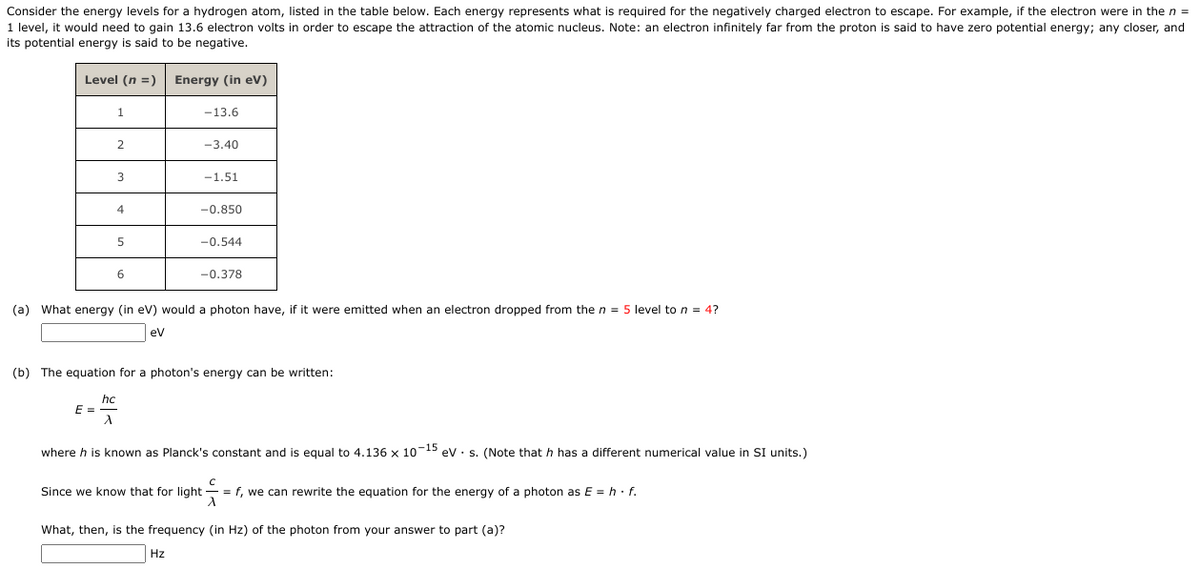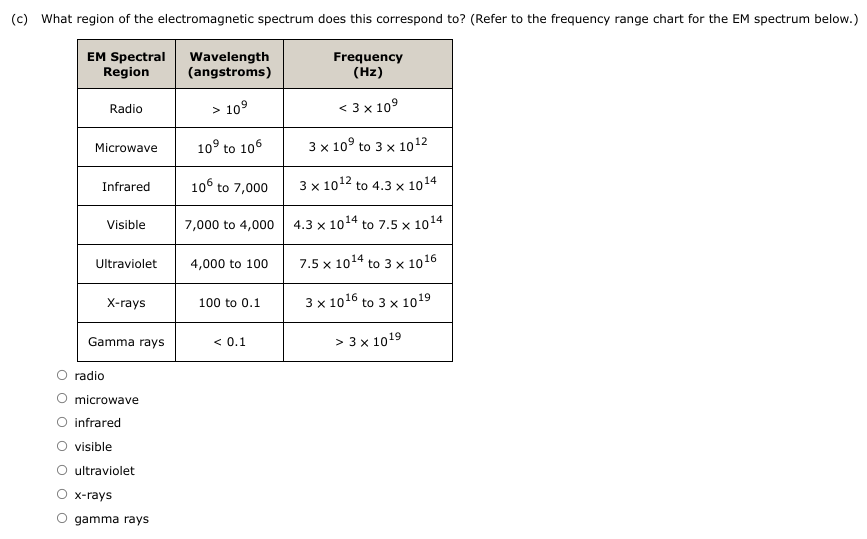Consider the energy levels for a hydrogen atom, listed in the table below. Each energy represents what is required for the negatively charged electron to escape. For example, if the electron were in the n = 1 level, it would need to gain 13.6 electron volts in order to escape the attraction of the atomic nucleus. Note: an electron infinitely far from the proton is said to have zero potential energy; any closer, and its potential energy is said to be negative. Energy (in eV) Level (n =) 1 E = 3 hc λ 4 5 6 -13.6 -3.40 -1.51 -0.850 (a) What energy (in eV) would a photon have, if it were emitted when an electron dropped from the n = 5 level to n = 4? eV Hz -0.544 (b) The equation for a photon's energy can be written: -0.378 where h is known as Planck's constant and is equal to 4.136 x 10-15 eV s. (Note that h has a different numerical value in SI units.) с Since we know that for light = f, we can rewrite the equation for the energy of a photon as E = h. f. A What, then, is the frequency (in Hz) of the photon from your answer to part (a)?
Quantum mechanics and hydrogen atom
Consider an electron of mass m moves with the velocity v in a hydrogen atom. If an electron is at a distance r from the proton, then the potential energy function of the electron can be written as follows:
Isotopes of Hydrogen Atoms
To understand isotopes, it's easiest to learn the simplest system. Hydrogen, the most basic nucleus, has received a great deal of attention. Several of the results seen in more complex nuclei can be seen in hydrogen isotopes. An isotope is a nucleus of the same atomic number (Z) but a different atomic mass number (A). The number of neutrons present in the nucleus varies with respect to the isotope.
Mass of Hydrogen Atom
Hydrogen is one of the most fundamental elements on Earth which is colorless, odorless, and a flammable chemical substance. The representation of hydrogen in the periodic table is H. It is mostly found as a diatomic molecule as water H2O on earth. It is also known to be the lightest element and takes its place on Earth up to 0.14 %. There are three isotopes of hydrogen- protium, deuterium, and tritium. There is a huge abundance of Hydrogen molecules on the earth's surface. The hydrogen isotope tritium has its half-life equal to 12.32 years, through beta decay. In physics, the study of Hydrogen is fundamental.


Trending now
This is a popular solution!
Step by step
Solved in 2 steps with 3 images









